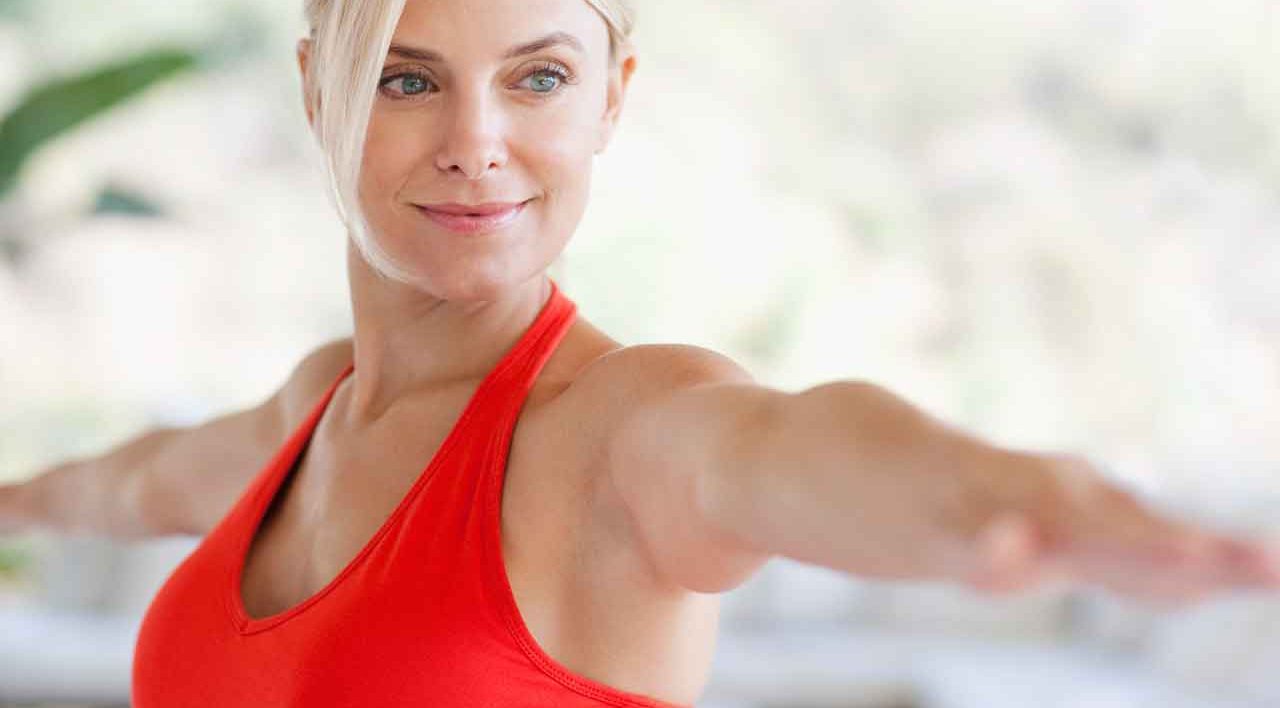Benefits of Yoga for Mental Energy

Combine exercise with meditation, as in yoga, and you have a double whammy for mental clarity. Here's what you should know about the health benefits of yoga.
Unusual in the realm of physical exercise, yoga focuses on your body and mind. In fact, yoga incorporates a science of breath, in which every pose is carefully matched to inhalations and exhalations.
Like some martial arts, it is traditionally considered a moving meditation.
YOU MIGHT ALSO LIKE: Meditation at All Ages
Health benefits of yoga
Yogis report the benefits. In a national study by Yoga Alliance and Yoga Journal, 86 percent of people who practiced yoga within the previous six months — along with 94 percent of yoga teachers — reported having a strong sense of mental clarity, compared to three-quarters of those who didn’t practice.
Studies have shown exercise itself improves brain fitness and facilities such as memory and mention mental and emotional health. Combine exercise with meditation, as in yoga, and you have a double whammy for mental clarity.
How to achieve the benefits of yoga
If you’d like to reduce fatigue or simply feel less muddled day to day, the following sequence can help. It’s designed to help you learn the basics of focusing on your breath while performing a classic sun salutation.
It may seem challenging to incorporate breathing when you’re worried about alignment, or just trying to get into a pose at all. If that’s the case, it’s a signal to slow down. Yoga should be a restful exercise that challenges yet calms you. Think of keeping your breath steady as a built-in safety mechanism that prevents you from pushing yourself to injury.
Seated meditation
If the idea of meditation appeals to you, take a few minutes at the start of your practice to simply breathe. Sit in a cross-legged or other comfortable position, holding your hands in prayer position at your heart.
Straighten your spine, roll your shoulders back and down, and take a deep breath. Then focus on lengthening your inhalations and exhalations for several minutes: Try counting to three for each, then increasing your count to four, five, or six. You can also repeat a mantra, such as Om or Peace or Clarity, silently or aloud.
If meditation doesn’t appeal to you, simply set an intention for your practice, then focus on your breath while performing the poses described below.
Sun salutation
Start in Mountain Pose. Inhale, reaching your arms above your head; exhale as you fold forward into a forward bend.
Inhale as you come halfway up to a straight back, resting your hands on the floor or the front of your calves. Exhale to step back into Plank, then lower down and inhale as you swing forward into the backbend of Upward Dog. Exhale as you move back into Downward Dog.
Rest for one to four breaths. Then inhale as you step forward into a half-lift, again holding your hands at your calves or the floor, and exhale as you fold into Forward Bend.
Finally, inhale as you stand and reach your arms high, then exhale as you return to Mountain Pose.
Tree Pose
If you need to, move next to a chair or wall for this pose.
From Mountain Pose, lift your right foot until it rests against your left ankle, calf, or thigh (avoid your knee), shifting your weight onto your standing leg. Move your hands to your hips for greatest stability or into prayer position at your heart.
To stabilize your balance, imagine you’re standing with your leg pressing against your opposite foot (rather than vice versa). Focus on rotating the hip of your lifted leg out to your side, keeping your spine straight.
Hold for two to four breaths. Then try this on the other side.
If you’re familiar with Tree and would like to incorporate something more challenging, Dancer Pose is another alternative.
Legs Up the Wall Pose
This pose will help calm your nervous system while also increasing circulation to your brain.
Bring the left side of your body against a wall. You can also use a door or even the arm of a couch — anything that safely supports the length of your extended legs.
Move your mat or a blanket to the wall to lie on. Then gently turn your body and bring your legs up to rest against the wall, laying your head and torso on the floor with arms extended at your sides, palms up.
Rest here for four to five breaths.
If you’re looking for a more strenuous inversion, Shoulderstand is another option, as is staying in Legs Up the Wall for the length of your Savasana, below.
Savasana, or Corpse Pose
Lie down on the floor, arms by your sides and legs extended. Make yourself comfortable — grab a blanket to stay warm if you need to — and close your eyes.
Breathe slowly, inhaling up from your abdomen through your nose, then exhaling through your mouth. Rest here one to three minutes, or for as long as you'd like
Updated:
August 02, 2023
Reviewed By:
Janet O’Dell, RN